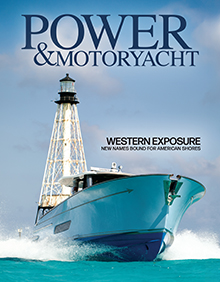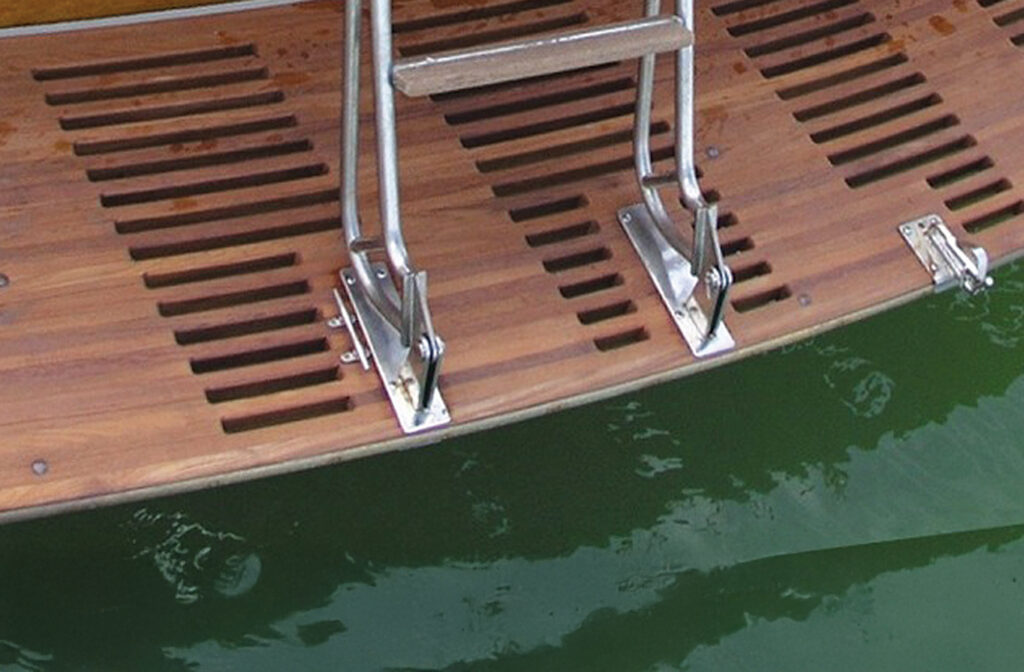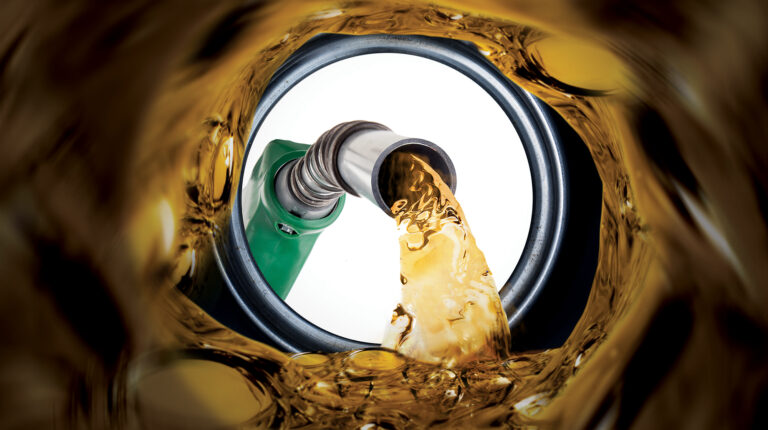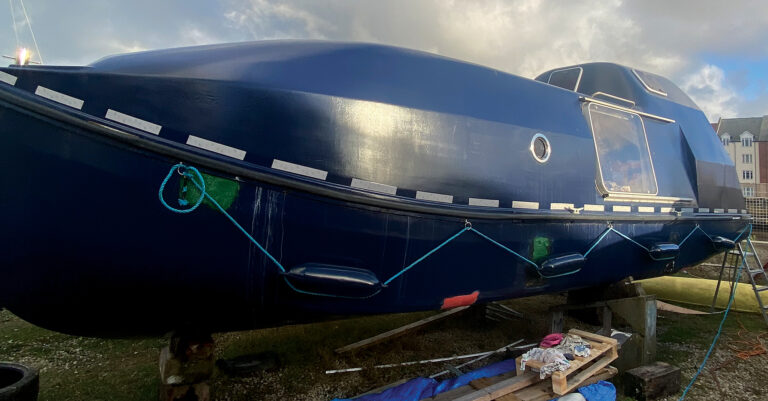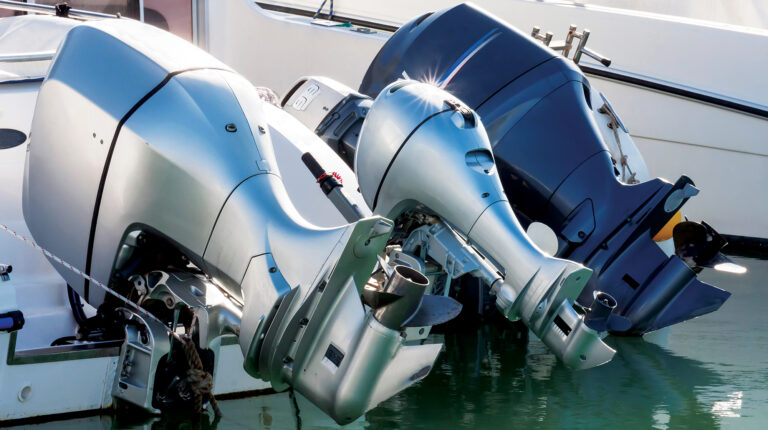Color Coordinated
Tired of Matterhorn White, Flag Blue and Sea Green? It’s time to rethink your color palette.
Only two colors are acceptable for painting a boat: white and black. And only a fool would paint one black. At least that’s what Nathanael Greene Herreshoff believed. Herreshoff, the “Wizard of Bristol,” was a naval architect, marine engineer, inventor and shipbuilder, and perhaps the greatest yacht designer of the late 19th and early 20th centuries. Included in his catalog of more than 2,000 designs are the successful America’s Cup defenders in six consecutive challenges; Herreshoff skippered one of them himself, the 124-foot Vigilant in 1893.

But really, Capt. Nat didn’t have much of an eye for color. What would he think of the rainbow of hulls we find in a typical marina today? In the 21st century, the sky’s the limit when it comes to hue, and it’s not just blue. Paint manufacturers offer an extensive palette of standard colors, and if that’s not enough, some will custom-mix any color. Maybe you’d like a gold hull, or bronze, or toreador red or pearlescent green? You can even have pink, if that’s your thing, although I’d think hard before going that route.
What Is Color, Anyway?
Color is really light, and light is radiation. Visible light is just a small segment of the electromagnetic spectrum, which includes X-rays, gamma rays, microwaves, long and short radio waves, and ultraviolet and infrared lights. Visible light lives right about in the middle of the spectrum and is comprised of many, many colors. How many? Depending on who you ask, anywhere from 7 to 10 million—though the average person can distinguish about a million. No wonder it’s hard to choose just the right color for your topsides.
There are three primary colors (red, yellow, blue) and three secondary colors (green, orange, purple). Theoretically, all the other colors can be mixed from the three primaries. I tried it during several art classes and the result was rarely what I envisioned—usually brown or sickly green. But who cares? There are so many paint colors on the market, already mixed and in the cans, that most of us can buy what we need off the shelf. For those few who can’t, there’s an easy way to get custom colors of almost any hue.

So Many Colors, So Few Boats
Awlgrip, for example, lists 120 standard and 48 metallic colors. I counted 30 shades of white, both warm and cool, but only one black. Alexseal Yacht Coatings offers 52 Premium Topcoat colors, with 12 whites and one black, and 24 metallics. Both Awlgrip and Alexseal metallics consist of a color base that’s coated with clear gloss for shine.
That should be enough choice to suit most skippers—but not everyone. Some people want custom colors, something the guy in the next slip, or the next harbor, doesn’t have. And that’s easy, too. It doesn’t take the color sense of an artist to blend just the right hue; all it takes is a color chip, and a little help from the paint company. Both Awlgrip and Alexseal can mix custom colors.
Awlgrip can match almost any color except fluorescents, says regional marketing support manager Marissa Sanchezaldana. Request an order form from your local Awlgrip distributor or through the tech line on the website. Fill out the form, checking off the product line you’re interested in—standard Awlgrip topcoat for most colors, high-gloss Awlcraft 2000, or Awlcraft SE for metallics and pearlescents. Return it with a sample of the color you want to match—a swatch of cloth, a chip of old paint, whatever, as long as it’s flat; curved samples won’t scan accurately, explains Sanchezaldana. A 2-inch square sample is ideal. A chemist at the head office in Houston will scan the sample and determine the blend of colors to recreate it. Most Awlgrip distributors have the equipment to mix custom colors, but some must be ordered direct from the factory. A minimum order is just a quart, so almost no job is too small for a custom color.
If you don’t have a color sample, a Pantone number will work, although Sanchezaldana says a sample is better. Pantone has more than 2,000 colors and is the standard reference for printing, packaging, fashion and product design. Professionals use a Pantone Color Guide to see them all, but buying one will set you back a couple hundred bucks. There’s a color selector tool on the Pantone website that’ll get you close—but color on a screen doesn’t look the same as color on a surface, so I advise investing in a Color Guide; get the one for products, not for graphics. The cost is negligible compared to the price of an Awlgrip job.
While you’re surfing, check out Mixit, a color-retrieval tool by AkzoNobel, parent company of both Awlgrip and Interlux. Mixit lets you search for colors by a specific name—for example, I looked for Matador Red, found its color codes (E7020 and 771228) and that it’s a metallic paint in the Awlcraft SE and SE S lines. Or let’s say you want to repaint your boat, a Grady-White, say, and match the original gelcoat. Mixit reveals four choices of Grady-White white, two in Awlcraft 2000 and two Awlgrip Topcoats. Many colors lack virtual color chips, so it’s not so good for browsing, but if you know the color you want and just need the code, it’s fine.

Is This Trip Necessary?
But not everybody wants, or needs, Awlgrip, Alexseal or another high-end paint; plenty of boats will look fine with conventional marine enamel, the paint that’s been mixed by Interlux, Pettit, et al., for generations. If I could get back all the money I’ve spent on Interlux products over the past five decades, I could buy that Miata I have my eye on. And I never had trouble finding a color I liked.
No custom colors from these guys, so you have to pick from their color chart, or mix your own custom hue (good luck with that). However, there are enough choices to satisfy a skipper with reasonable aesthetic tastes. Far-out folks wanting neon—or something more visually aggressive—should try DayGlo, with colors that’ll knock your eyes out. Their oil-based 215 Alkyd Brushing Enamel comes in 11 fluorescent colors and glows in the dark when exposed to black light. I see some real possibilities here!
But not for most people. Back in the real world, Interlux offers 23 colors in its one-part, easy-to-brush Brightside Polyurethane enamel, 17 in its two-part Perfection polyurethane. Pettit has 32 colors in its EZ-Poxy single-part polyurethane line. VP of Marketing Scott Townsend says the basic 24 colors have stayed the same for 50 years; the rest change to match the style of the day. Ice Blue and Mint Green are popular now, he says, along with a light grey. Pettit matches some of the colors of Awlgrip and Alexseal, making EZ-Poxy a good choice for touching up hatch or door frames and other trim pieces, or for painting the tender to match the Awlgripped mothership.
Of the 32 topcoat colors, there are a dozen whites, adds Townsend, and Pettit’s best-selling color is Matterhorn White, as it has been for years. That should make Capt. Nat Herreshoff very happy. ρ
Finding Your Color
Every paint manufacturer, whether marine paint or house paint or automobile paint, offers color chips that help you visualize how the finished project will look in that color. I always choose an overly intense color using chips: The yellow that looked so good to me on the sample is too garish in the kitchen. I need to see it big, and maybe you do, too.
Painting a boat is way more labor- and cash-intensive than rolling a fresh coat on the hacienda walls, and mistakes are a lot more costly. Rather than winging it based on a micro color chip, or trying to visualize how your yacht will look wearing the same color as your wife’s favorite cocktail dress, color-shop at the local paint store. I patronize Sherwin-Williams. Sherwin-Williams sells marine paints, too, but mostly for commercial vessels. If I had a steel or aluminum yacht, I might try their SeaGuard 100 Marine Alkyd Enamel.
For a few bucks, Sherwin-Williams, and many other paint manufacturers, will sell you small samples of any of their 1,500 colors; you can buy several, paint them onto something and see how they look. Pick an alkyd trim enamel in gloss, which is closest in finish to a marine topcoat. When you find a color you like, send a sample to Awlgrip or Alexseal and they’ll match it and brew up however much you need. Maybe, unlike me, you’ll get it right the first time.

